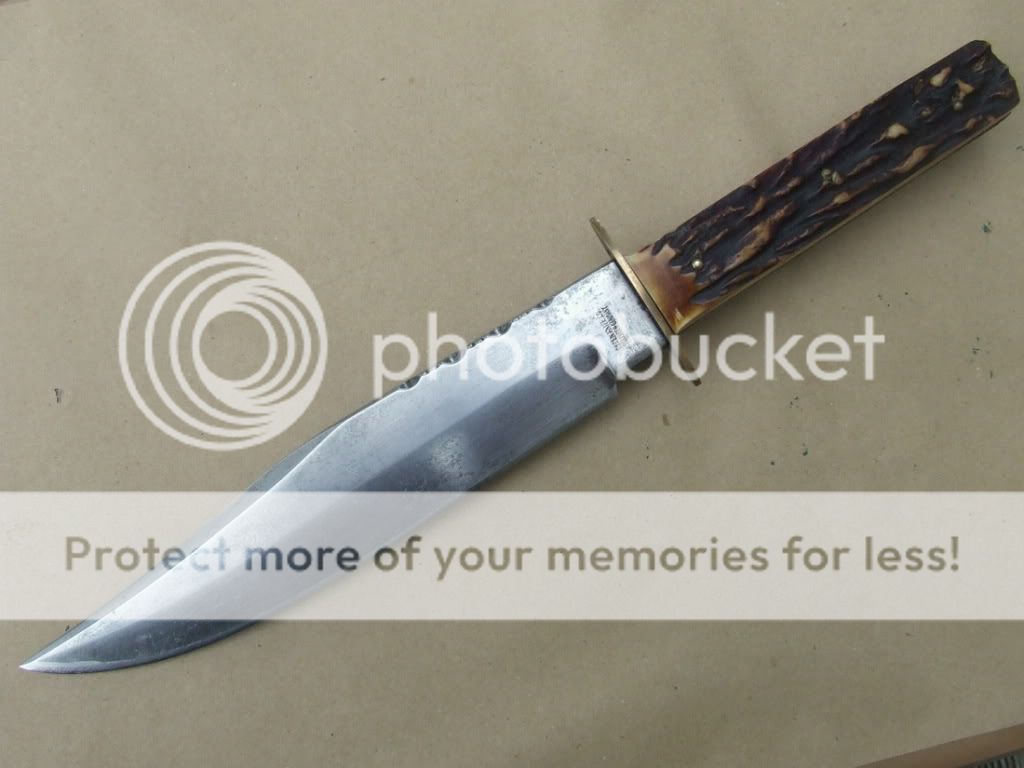Happy New Year everyone.
I have seen a lot of the term Turkish Clip, Californian Clip on the Fixed Blades,
Some examples shown ( in my opinion ) with a Traditional slip joint and the spine taking a downward slope from the tang is not what I call a Turkish Clip - a true Turkish Clip is a straight Spine that ( around) halfway along, the Spine ( not the edge ) then re-curves deeply and log towards the Tip.
I used to have several examples of great Turkish Clip Points -but I have sold most of my fixed blades over the years and obtain just a small handful now that Traditional Pocket knives have swamped my world.
Here is a link from A. J.Russel who give us a good pictorial for the shapes of blades...
https://agrussell.com/encyclopedia/blade-shapes
This image here doesnt represent a Turkish Clip shape - although the Cammy at the bottom of the photo would represent more of a Californian Clip touches near the neighbourhood - but is not any of the op's Shape in question, and the Top Fixed Blade Spine curves right from the Tang to the tip - so definitely not a Californian or Turkish Clip.... but a good comparison of the middle knife which is a Clip - compared to the more curved Clip ( A.J. Russel calls a long clip )at the bottom.

Here is a good example of a Turkish Clip Point.......Note the beginning of the recurve halfway down the Spine - which takes a d
eep curve right to the tip.......

Californian - not so long - almost an imbetween?

Here is a Genuine Bowie Knife- Theres a lot of talk about what is a true Bowie, but in fact the Bowies that were carried were quite often a very light knife - Bernard Levine checked this knife out to what I suspected it to be, this is a 1850's Sheffield Knife made for the American Civil Market with a deep etchof the eEagle and "Home of the Brave" etch - this would be your more Californian Clip - Although on this knife its becoming a bit "stretched" in length.

This is the photo I was after, this is a Vintage Solingen Olsen, this is actually quite a hard knife to find, the smaller 10 inch version can be found at rare times - but this 13 inch version is extremely hard to find, I have only seen one other, The thing that makes this knife stand out than most of the other 1950 and 1960's Solingen Knives is that this is one of the few true Turkish Clips from Factory - dont confuse the well known "Original Buffallo Skinner" as a Turkish clip - thats a curved Skinner period.
I think this knife is pretty darned cool!

The only difference between a Californian Clip Blade and a Turkish is that Turkish is longer, This Sheffield Eye witness beauty is what I deem as a Califorinan Clip point more than a Turkish - because it is not a straight angle off the Spine, has a nice curvature and is slightly longer than your standard Clip Point.
Just my view, one that was shared a while ago in the fixed blade world - I look back and laugh as my friend Rick - who has an extensive Collection of extremely good knives - would often buy some knives earlier on - then get me to post them in Bernards Forum - and Iof course would ask questions - well.... I used to walk out of there with the skin lashed off my back at times lol









